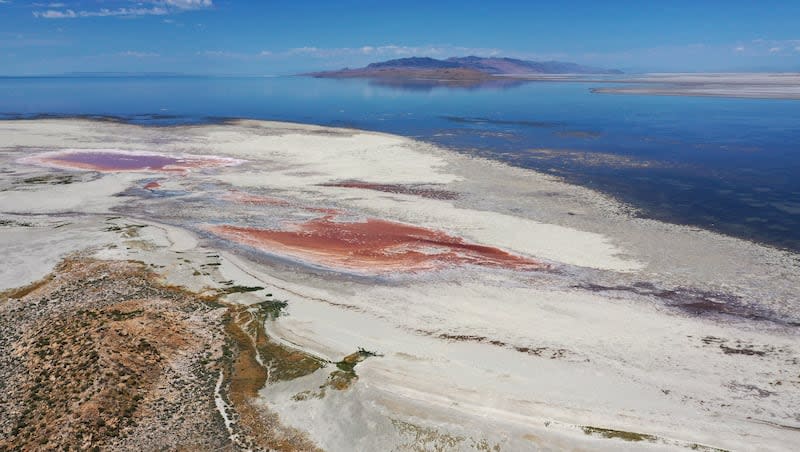Opinion: There’s reason to have hope for Great Salt Lake

This year’s legislative session has not seen as many major bills focused on the Great Salt Lake as in the previous two sessions, but it still has seen a flurry of smaller bills. With less than a week remaining in this legislative session, here are the most important actions currently in consideration at the Utah Capitol.
The Legislature still needs to pass the most important bill for the lake proposed this session, HB453. Sponsored by Rep. Casey Snider, R-Paradise, and Sen. Scott Sandall, R-Tremonton, HB453 provides a comprehensive regulatory scheme to reduce water consumption by mining companies that extract resources from the Great Salt Lake. This law would submit these companies to the same constraints placed upon every other water user in the basin. Up to this point, these mining companies have operated without any real constraints on their water usage. As a society, we have come to see that not only do the millions of migratory birds that make the lake home for part of the year need the lake, we do too. Getting water to the Great Salt Lake means less risk from toxic dust storms that generate over the lake’s drying lakebed, and it means a better snowpack.
At a hearing earlier this month, Snider described the rules that apply to these mining companies as the “wild, wild West.” Estimates vary, but these companies utilize somewhere between 5-10% of all the water taken out of the Great Salt Lake’s watershed. Without this bill, the water conserved by farmers and municipal users is at risk of not going toward refilling the lake, but could instead be used for mining. While we believe this bill is likely to become law, it still needs to advance through the Senate this week.
This week will also see the Legislature vote on the budget, which is one of the last items of business during the session. One of the most important actions the Legislature can still take is to vote in favor of a request for appropriations to allow experimentation for what is known as split-season leasing. This request was made by Rep. Doug Owens, D-Millcreek, and comes with the support of the Farm Bureau. Split-season leasing allows farmers to forgo third or fourth cuts of their crops, which often have a much lower yield, and instead lease the unused water to the state so it can be used to refill the Great Salt Lake. Split-season leasing makes sense for crops that have more than one growing season. One of Utah’s most water-intensive crops, alfalfa, fits that bill.
This appropriation request is for a pilot program that will test whether farmers will willingly lease water to the state. Considering the state’s multi-billion dollar budget, this is a small request of only $500,000. Getting farmers to willingly lease some of their water would help the state chart a way forward to increasingly get more water to the lake.
The progress made in saving Great Salt Lake should not be lost on Utahns. Entire industries are changing right before our eyes. Many of the bills or ideas raised this session would have been unthinkable five years ago. The race to save the Great Salt Lake is a marathon, but one that requires us to sprint out of the gate. While Utah cannot claim victory in saving the lake, we have a pathway to victory before us. This session, we have made some headway on that path, and that is something to celebrate.
Bryant Holloway is a second-year law student at the University of Utah S.J. Quinney College of Law. Brigham Daniels and Elisabeth Parker are both professors at the S.J. Quinney College of Law and head up the Wallace Stegner Center’s Great Salt Lake Project. Holloway has worked with Daniels and Parker this semester in the Great Salt Lake Environmental Policy Accelerator, a course focused on providing policymakers and the affected public timely, actionable policy analysis focused on getting more water into Great Salt Lake.
